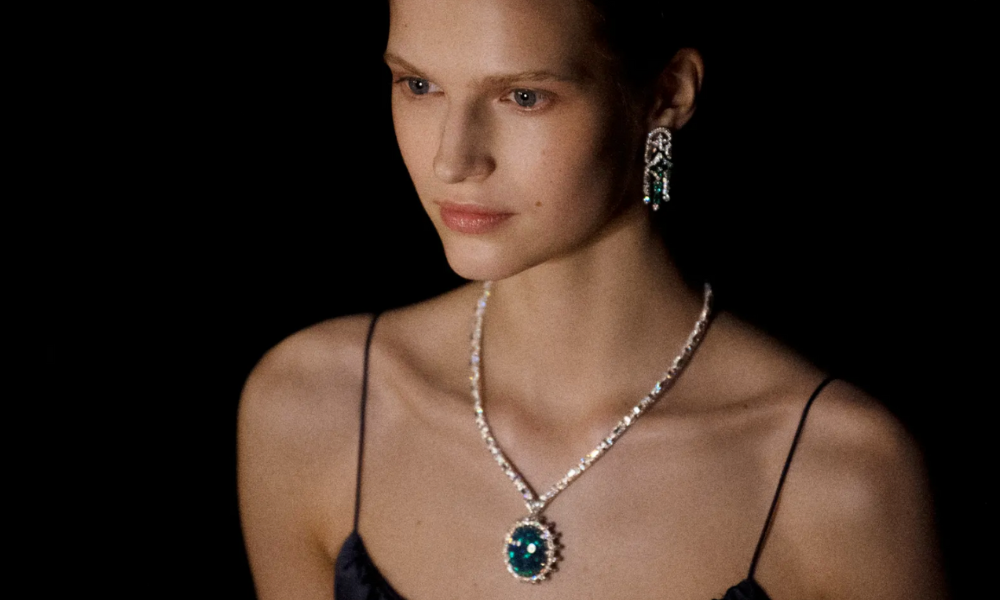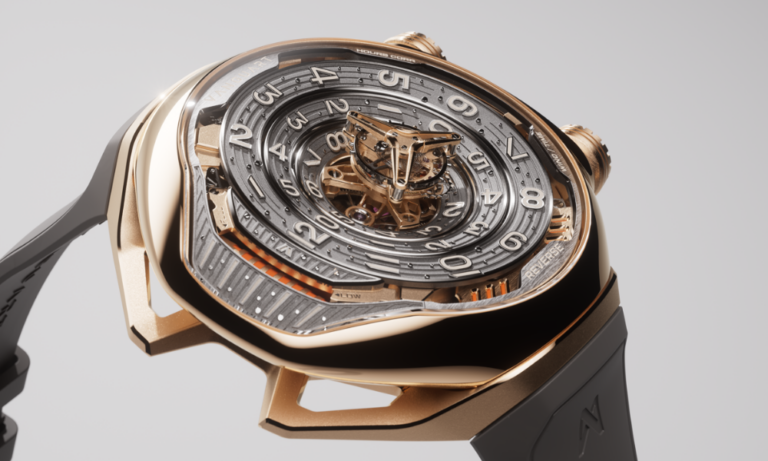We touch on why competitive escalation imperative for high jewellery brand’s advancement, and accordingly offer strategic guidance on the industry’s newly defined “survival of the fittest” codes.
Traditional vs. inventive design and craftmanship.
In essence, high jewelry’s associated marvel can be traced back to the drawing board – or gouache renderings rather. Sourcing a remarkable gemstone and traditional quality design, no longer suffice for a piece to be deemed truly “haute,” in jewellery’s contemporary competitive landscape. Rather, there is a need for intentionally inventive design and craftsmanship – an undertaking that is not for the faint hearted. In 1950 Van Cleef and Arpels paved the way for innovation with its infamous “mystery setting.” Patented in 1933, the Maison demonstrated the technical possibility of setting diamonds side-by-side without a metallic channel nor glistening prong in sight.
Dior’s Victoire de Castellane’s limitless bounds of creativity saw her create a collection, mimicking the look and feel of two-dimensional fabric within high jewellery in 2022. The brilliance behind the pioneering design was the precision with which pieces would seamlessly hit specific tangent points, so as not to disrupt the “flow” of the patterns studded on the jewellery when worn – resembling material. In the same (innovative) vein, Louis Vuitton’s Francesca Amfitheatrof is the mastermind behind envisaging a bespoke diamond cut patented by the Maison. Through a strenuous creative and engineering endeavour, the instantly recognisable 53-facet, four-pointed end cut was born.
Most recently, the ingenuity embodied by the Chanel workshop, was encapsulated in its high jewellery collection, Tweed de Chanel, which emulated the touch, feel and movement of Mademoiselle Coco’s beloved fabric. Special “articulation techniques” and “minimalist setting” for a smooth to touch feel, forged jewellery’s visual and tactile interpretation of the woollen fabric. Said design and craftsmanship novelties, demonstrate the inventive and technical benchmark required to undercut rivals, let alone, survive in the niche. The result, is widespread advancement in the calibre of the industry’s talent, through purposeful originality within the craft – from rendering in the studio to crafting on the bench.

Vitrine bound vs. novel presentation and intimate customer experience.
January and June 2023’s high jewellery unveilings have demonstrated that the pieces themselves are only part of the equation for commercial and competitive success. The experiential side of high jewellery has arguably become equally as significant. Under the Venetian sky the unveiling of Bulgari’s Mediterranea collection witnessed twinkling glass sculptures by Venini and a profound AI jewellery making experience for select guests. Nothing less than an original melodic wonder by violinist Renaud Capuçon and a Dimitris Papaioannou choreographed spectacle would set the stage for Louis Vuitton’s presentation of Deep Time, its latest +170 pieces high jewellery collection.
Dancing Harlequin personas, marching pulcinellas on stilts, floating hot air balloons and a gliding golden chariot were among the vast paraphernalia gracing the iconic Villa Medici, the backdrop to Van Cleef and Arpels’ unveiling of Le Grand Tour. Attendees were invited to a dynamic viewing of the voyage inspired jewels, where models gracefully boasted the pieces in action. The need for immersive showcasing and an intimate customer experience are the new industry standard to indulge a high-net-worth audience during a collection’s unveiling where more is more.
For the industry, it is the intensified competition (especially in the wake of fierce entrants) of truly novel and distinguished pieces that will spearhead the agenda of furthering creativity and technical frontiers. Furthermore, ready-to-wear’s penetration into high jewellery has spurred the departure from showcasing pieces in ice-cold vitrines. Instead, the category has revolutionised its presentation strategy with its own interpretation of a typical catwalk. Ultimately, if a brand dismisses forging a competitive design and execution ethos and as Bernstein’s Luca Solca puts it, “cannot afford a landmark flagship, major itinerant shows and high-profile V.I.P. entertainment at the four corners of the world? Then you cannot play in the premier league.”

ALSO READ: WHY ARTIFICIAL INTELLIGENCE AND VIRTUAL REALITY MATTER FOR FINE JEWELRY DESIGN AND PURCHASES?




